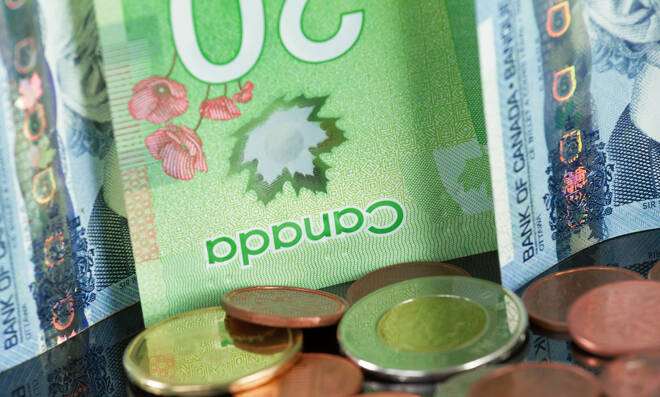Advertisement
Advertisement
USD/CAD: Loonie Gains on Firm Crude Oil Prices; Investors Eye BoC Monetary Policy Decision
By:
“Any view on CAD is strictly dependent on incoming news…we think USD/CAD can gradually decline towards 1.2600 into year-end,” noted ING’s Pesole.
The Canadian dollar strengthened against its U.S. counterpart on Monday as recovery in crude oil prices and nearly flat greenback supported the commodity currency; also investors await the Bank of Canada’s monetary policy announcement on Wednesday, where it may address market expectations of successive rate hikes next year.
“The Bank of Canada, which holds a policy meeting (on Wednesday), is set to continue facing the pressure from domestic data – in our view – although the developments on the virus side naturally hold the key for the policy response in the near term. Markets have changed their expectations in Canada over the past week, shifting from pricing a March rate hike to seeing the first move in June,” noted Francesco Pesole, FX Strategist at ING.
“This has contributed to keeping CAD under pressure amid the unsupportive risk environment and the oil sell-off. Given the high beta to sentiment and commodities, any view on CAD is strictly dependent on incoming news about the danger associated with the new variant, but if we exclude a return to draconian measures in highly-vaccinated communities, we think USD/CAD can gradually decline towards 1.2600 into year-end.”
Today, the USD/CAD pair fell to 1.2779 down from Friday’s close of 1.2842. The Canadian dollar hit its lowest level in over two months last week. After gaining about 2.3% in October, the Canadian dollar weakened over 3.1% last month.
Canada is the world’s fourth-largest exporter of oil, which edged higher on improved sentiment. The top U.S. infectious disease official told CNN that there is no indication yet that the cases of Omicron are more severe than mild in South Africa, Reuters reported.
At the time of writing, U.S. West Texas Intermediate (WTI) crude was trading 3.24% higher at $68.41 a barrel. Higher oil prices lead to higher U.S. dollar earnings for Canadian exporters, resulting in an increased value of the loonie.
The dollar index, which measures the value of the dollar against six foreign currencies, was trading nearly flat at 96.172. The Invesco DB US Dollar Index Bullish Fund, which is designed for investors who want a cost-effective and convenient way to track the value of the U.S. dollar relative to a basket of the six major world currencies – the euro, Japanese yen, British pound, Canadian dollar, Swedish krona and Swiss franc – closed flat at 25.78 on Friday.
The last minutes of the U.S. Federal Reserve meeting confirmed market expectations that the Fed will raise rates sooner than other major central banks. The greenback hovers near the 16-month high against most other major currencies because of the hottest U.S. inflation reading in a generation that pushed investors to bet that interest rates are likely to rise sooner than previously thought.
It is highly likely that the world’s dominant reserve currency, the USD, will rise by end of the year, largely due to the expectation of at least one rate hike next year. With the dollar strengthening and a possibility that the Federal Reserve will raise interest rates earlier than expected, the USD/CAD pair may experience a rise.
On Friday, the Canadian economy added 153,700 jobs in November, much higher than the analysts’ expectations of 35,000. As a result, the unemployment rate decreased to 6.0%, better than the consensus estimate of 6.6%, according to Statistics Canada.
About the Author
Vivek Kumarauthor
Vivek has over five years of experience in working for the financial market as a strategist and economist.
Advertisement
